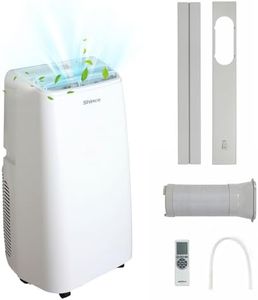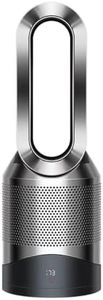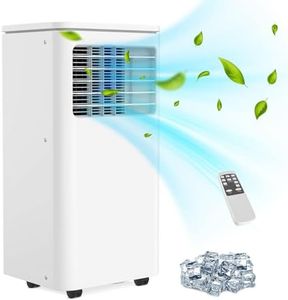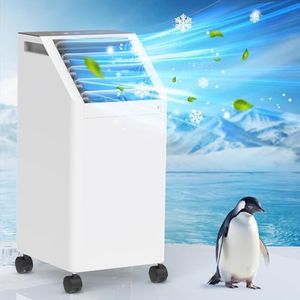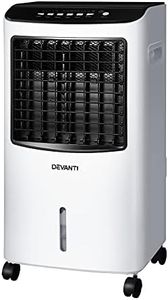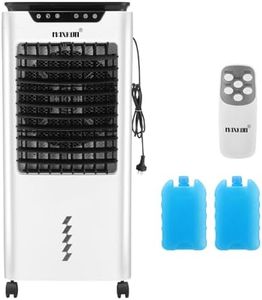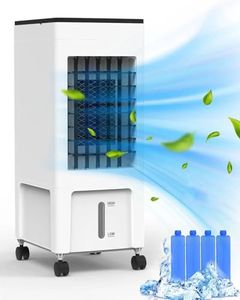We Use CookiesWe use cookies to enhance the security, performance,
functionality and for analytical and promotional activities. By continuing to browse this site you
are agreeing to our privacy policy
10 Best Portable Room Coolers
From leading brands and best sellers available on the web.#1
Winner
Buying Guide for the Best Portable Room Coolers
Choosing the right portable room cooler can make a big difference in your comfort during warmer months. The ideal cooler will depend on the size of your room, how humid your area is, and your expectations for cooling performance. Unlike air conditioners, portable coolers use the evaporation of water to lower temperatures and work best in drier environments. It's important to balance factors like cooling power, portability, water capacity, and energy efficiency to find a cooler that meets your specific needs.Cooling Capacity (CFM or Room Size Coverage)Cooling capacity refers to how much air the cooler can circulate and how large an area it can effectively cool, usually measured in Cubic Feet per Minute (CFM) or square footage. It's important because a cooler that's too small won't lower the temperature effectively, while one that's too large may waste energy or create excess humidity. Small coolers (below 300 CFM) are best for small bedrooms or offices up to 100 square feet, mid-sized ones (300-600 CFM) suit living rooms or medium spaces up to 250 square feet, and larger models (above 600 CFM) are aimed at bigger rooms or open areas. Consider the size of your room and choose a model whose coverage slightly exceeds your needs for best results.
Water Tank CapacityThe water tank capacity indicates how much water the cooler can hold, affecting how long it can run before needing a refill. Larger tanks (over 7 liters) allow the cooler to run for many hours uninterrupted, while smaller tanks (under 5 liters) require more frequent attention. If you plan to use the cooler overnight or for long periods, opt for a higher-capacity tank to reduce the hassle of constant refills. If portability and light weight matter more, a smaller tank may suffice.
Portability and SizePortability involves both the physical size and weight of the cooler as well as design features like handles or wheels. Compact coolers are easier to move from room to room and save space, but may have reduced capacity. Larger, sturdier models can cool bigger areas but may be less convenient to transport. Think about how often you’ll need to move the cooler and how much space you have for it—this will guide you towards the right size and portability features.
Power ConsumptionPower consumption refers to how much electricity the cooler uses while running. It's an important factor for both sustainability and keeping electricity costs down. Coolers are typically much less energy-intensive than air conditioners, but models with extra features or stronger fans may consume more. If you use the cooler for long periods or wish to minimize your energy footprint, look for models noted for energy efficiency or those with variable speed/fan settings.
Air Filtration/Additional FeaturesSome portable room coolers come with built-in air filters, ionizers, or antibacterial pads which help purify the air while cooling it. This feature is useful if you’re sensitive to allergens or dust. Other extras might include timers, remotes, or oscillation for even air distribution. Prioritize additional features that align with your comfort, health, or convenience needs.
Suitability for Humidity LevelsPortable coolers work best in dry climates, as their cooling method depends on water evaporation. In very humid places, these coolers may not be as effective and can add to the moisture in the room. Before buying, consider whether your local weather is suited for evaporative cooling—if you live in a high-humidity area, a traditional air conditioner may work better, but in dry regions, coolers are very effective and economical.

